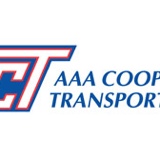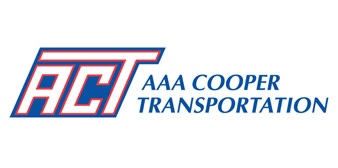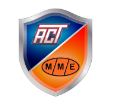Information
-
Annual Shop Compliance and Safety Inspection
Terminal Information
-
Terminal
-
Shop Manager
Inspection Information
-
Conducted on
-
Inspected by:
Equipment Information
-
Total Tractors Serviced:
-
Total Trailers Serviced:
-
Instructions for form completion:
Any entry marked as "NO" which requires corrective action , should be identified and a description of the necessary corrective action must be given in the "comments:" section at the end of each section.
Email the inspection as an attachment to the appropriate Director and the manager. Copy Damian Dewitt on the email. In same email, make specific mention of the items that need correcting and note in the email that you will follow up on these items in your next visit to the terminal. If an item was identified as a "NO in the previous inspection, a note should be made in the email. These items will require immediate action.
Save this as a PDF attachment on the ACT Safety site on sharepoint. This will allow you to reference it before your next visit and folllow up on the items that needed correcting. -
Manager's Acknowledgement of Corrective Actions Needed: I have read and discussed the items marked as needing Corrective Action. I understand that these items require immediate attention. It is my responsibility to see that proper corrections are made so that we maintain compliance with all applicable regulations, both those Federal, State and Local agencies, as well as those set internally.
1
Shop Fire Prevention and Emergency Action plan
Ingress/Egress
-
Are all exits marked with an exit sign of the proper size and illuminated electrically or glows in the dark?
-
If shop is equipped with emergency lighting, is it operable?
-
Are doors and stairways that are not exits or do not lead to exits marked with "not an exit" or the name of the room such as "basement, closet, etc.)
-
Are all exits kept free from obstacles and Unlocked ?
-
Are sufficient exits available?
Fire Safety and Fire Extinguishers
-
Are fire extinguishers placed in a manner that no person is ever more than 50 ft from an extinguisher?
-
Are fire extinguishers inspected monthly by an ACT employee?
-
Are fire extinguishers tested annually by an authorized company?
-
Does the inspection tag provide the name, phone number, and certification number of the vendor and include a statement that the vendor meets the NFPA 10 requirements?
-
Have applicable shop employees been trained on the proper use of a fire extinguisher?
-
Has the smoke free workplace policy been implemented?
Emergency Action PLan
-
Is the emergency action plan for the shop current and available?
-
Are work place diagrams or maps posted showing the escape routes, emergency assembly area?
-
Are emergency telephone numbers for police, fire, medical etc. posted in a conspicuous location?
-
Is an audible alarm set up to alert shop personnel in case of an emergency?
2
Health and Sanitation
Breakroom
-
Are lunch/breakroom areas adequate and clean?
-
Are appliances such as microwave and refrigerator kept clean?
-
Are ample trash containers available and emptied frequently?
Restrooms
-
Are rest rooms clean?
-
Are restrooms properly stocked with trash cans equipped with liners, toilet paper hand towels and soap?
-
Is adequate privacy afforded the users? For example are locks on doors and individual stalls, are shower curtains availabe and in good condition etc.?
First aid kits
-
Are first aid kits adequately maintained and not expired?<br>
-
Is the monthly first aid checklist being done?
Office
-
Are office machines, vending machines and water machines in good repair and grounded?
-
Are office machines free of dirt and grease?
Shop
-
Is ample work space available?
-
Are work areas kept clean and neat?
-
Are floors and aisles free from trash and debris?
-
Are floors dry and in good condition? Is Roof free of leaks or defects ?
-
Are stairways and stairs rails in good condition?
3
Electrical/Utilities Room or Area Panels
-
Are permanent wiring panels and switches securely mounted and free of defects?
-
Are breaker or fuse boxes equipped with a cover?
-
Are all breakers or fuses labeled for use or location?
-
Does area in front of breaker panel have a 3 ft clearance?
-
Is the area clean and free from dirt and combustibles or other cleaning supplies, etc. that could pose a fire hazard?
-
No apparent overloading of outlets? Are all outlets free of defects ?
-
Is area free of loose wires, cords or other tripping hazards?
Shop Equipment, Work Practices and Appearance
-
Are elevated storage areas or balconies posted with the maximum floor load capacity?
-
Are elevated areas or balconies equipped with guard rails, railing or other suitable fall protection?
-
Are chains for hoists or lifts inspected daily?
General Shop Safety
-
Are stairs, ladders, and ramps in good repair, secure, equipped with hand holds or railings and free of trash and obstructions?<br>
-
Are overhead doors operable and secure?
-
Are light cords,hose reels and extension cords operable and free of defects?
-
Are chocks in use on all vehicles?
-
Are all anti-tilt stands, pins and pin keepers in use on twin trailers as necessary?<br>
-
Are materials such as tires, tools, etc., stored in such a way that they are not likely to fall over or cause a tripping hazard? <br>
-
Is material handling equipment properly stored, in good repair, free of dirt and grease?<br>
-
Is overhead lighting adequate and operating properly?
-
Are all lights burning?
-
Proper use of equipment guards as needed?
-
Air pressure reduction device used as required?
-
Safety procedures are followed when moving all vehicles?
-
Ventilating devices are used when engines running.
-
Is the general noise level o.k.?
-
Are the Shop Monthly Self Inspection Forms available for the last 12 months?
-
Are employees dressed properly with no loose clothing?
-
Are materials handled in such a manner to prevent injury, Are proper lifting techniques utilized?
-
Is material handling equipment being used properly?<br>
-
Are safe work practices being observed?<br><br>
-
Is personal protective equipment used as needed?
-
Hearing protection?
-
Steel toed safety shoes?
-
Eye and/or face protection (safety glasses or goggles, welding hood, safety goggles, face shield)?<br>
4
DRIVING
-
Do shop personnel obey speed limits and traffic patterns while driving Vehicles (including forklifts) on the yard?<br>
-
Do shop employees use the three point hold when getting on and off tractors, trailers, hostlers and forklifts?<br>
-
Do shop drivers check to assure the path is clear before backing and do they yield the right of way?<br>
-
Do shop drivers observe the "no rider/passenger" rule?
-
Are safe work practices and personal protective equipment requirements <br>observed when refueling forklifts?<br>
-
Are shop forklifts inspected daily? (check records)
FUELING AREA
-
Are fuel nozzles attended when in use?
-
Is the fuel island kept free of trash and spills?
-
Is an adequate supply of non-combustible absorbents available on the fuel island? <br>
-
Are engineering controls in place that will prevent fuel from getting into <br>the environment in the event of a spill?<br>
-
Are trash containers available and emptied frequently?
-
Is lighting adequate on the fuel island?
-
Are pumps protected from damage by bollards or a raised concrete island?
-
In the event of an emergency, is a shutoff switch available in a location away from the pumps and clearly marked?<br>
-
Is a fire extinguisher available within 15’ to 25’ of the fuel pumps?
-
Are the fire extinguishers in good condition and properly charged?
-
Is the fuel area clearly marked as a no smoking area?
-
Are the Monthly Fueling Equipment Inspections being done?
5
HAZARDOUS MATERIALS HANDLING
-
Do employees know the AAA Cooper Transportation’s written Hazard Communication Plan is accessible through Sharepoint (mycooper.aaacooper.com)?<br>
-
Is the Hazard Communication Poster posted?
-
Do the employees know Safety Data Sheets are available during hours of operation through MSDS Online?<br>
-
Are Safety Data Sheets available for all products? Ask someone to show you the MSDS on MSDSOnline for a few shop products.<br>
-
Are the following supplies on hand?
-
a) Gloves for handling corrosives and flammables
-
b) Proper eye protection
-
c) Adequate supply of noncombustible absorbent or appropriate substitute
-
Do supervisors understand they are not to respond to Hazardous Material spills without the guidance of Risk Management or Premium Environmental Services ?<br>
-
Are hazardous materials stored in undamaged containers?
-
Are all containers properly marked with the name of the product and its <br>hazard including secondary containers such as spray bottles?<br>
-
Have all shop employees received hazard communication training ?<br>
-
Are flame or spark producing operations isolated from flammable or combustible liquids and materials?<br>
-
Are containers grounded when transferring combustible/flammable liquids where appropriate?<br>
-
Are flammable products kept in a fire-proof cabinet and is cabinet<br>closed when not in use?<br>
-
If flammable cabinet doors are spring loaded, are they functioning properly?
-
Are incidental chemical spills cleaned up immediately according to the<br>Hazard Communication Program?<br>
-
Does the shop have a covered metal container used exclusively and clearly <br>labeled for shop rags?<br>
-
Are rags removed by the approved vendor in a timely manner?
-
Does the shop have a covered metal can for gasoline with a spring-lid and <br>mesh screen in the fill neck?<br>
6
WELDING AND CUTTING
-
Are welding and cutting operations performed safely and in the designated locations?<br>
-
The cart is not at risk of being struck by vehicles, equipment, or materials
-
Both cylinders have valves closed and protective caps or are connected <br> to a properly functioning regulator. <br>
-
Welding or cutting is not allowed to be done inside any enclosed areas such <br>as trailers with door closed, etc.?<br>
-
Appropriate PPE is being worn
-
Gauges are in good repair
-
Cylinders are secured to the cart by straps, chains, etc.
-
Backflash prevention valves are on the torch
-
There is only one acetylene and one oxygen cylinder on the cylinder cart
-
The cart is specifically designed to hold the cylinders upright
-
The cart is stored on a firm, level surface
-
Leads and hoses are in good repair
MACHINES, EQUIPMENT, AND TOOLS:
-
Electrical equipment, machines, and tools protected by ground or double insulation?<br>
-
Are moving parts within seven (7) feet of floor enclosed or provided with <br>safety guards?<br>
-
Are hoists, cranes and jacks marked for capacity or load rating, and operated <br>within specifications? <br>
-
Parts/Tool cleaning tank:
-
a) Ventilation is good.
-
b) Tanks have automatic and manual closures.
-
c) Tanks are isolated from sparks and flames
-
d) Is the lid closed when tank is not in use?
-
Are safety goggles, Apron and neoprene gloves used while washing parts?
-
Have all employees received scissor lift training if applicable?
-
Does the air compressor have warning labels stating that it starts<br>Automatically?<br>
-
Are hand tools in good repair- no burrs, loose handles, etc.?
-
Do employees inspect equipment and tools for defects prior to use?
-
Are power tools in good condition?
-
Are ladders, scaffolds, and portable stairs in good repair, and properly used?
-
Are the ladders inspected for defects before each use?
-
Are the ladders rated to hold the capacity of the heaviest shop employee and<br>anything that might be carried up the ladder by him? <br>
-
Have all shop employees received Ladder Safety Training?
-
Is the grinder work rest free of excessive wear and chips?
-
Is the work rest no more than one 1/8” distance from the wheel?
-
Is the grinder wheel free of chips, cracks or foreign objects in wheel?
-
Is the grinder tongue guard in place and no more than ¼” from the wheel?
-
Is the grinder eye shield in place when used?
7
Hydraulic Forklift Hoist
-
If the shop is equipped with a hydraulic forklift hoist:
-
a) Are the hydraulic cylinders secure, free of leaks and damage?
-
b) Are safety stands being used, secured, and operating properly?
-
c) Is the battery in the tray and secured to the frame?
-
d) Is the battery tray top secure and are the battery ends tight and secure?
-
e) is all wiring secure, in good operating condition, free from fraying?
-
f) Is the control handle in good operating condition?
-
g) Are wheel locks and safety stands secured and operating properly?
-
h) Are safety stands and wheel locks being used?
-
i) Are all anchor bolts secure and tight to the floor and frame of the lift?
-
j) Is the rack clean and free from grease and oil?
BATTERIES
-
Have applicable employees been trained on battery safety?
-
Are batteries stored properly inside? (on a rack provided by battery distributor or placed on a rubber mat or on a wooden table or shelf) <br>
EYEWASH
-
Eyewash station is available, operable, and in good repair?
-
Is the eyewash station being checked and flushed weekly?
-
The eyewash station fluid has not expired
-
The eyewash station is not blocked.
-
Is the eyewash station located a safe distance from electrical outlets or boxes?
8
MAINTENANCE PITS
-
Is a guard rail, or chain in place around any open pit, except inspection lane pit when in use?<br>
-
Are pits clean and free of obstructions which could create a trip or fall <br>hazard?<br>
-
Are pit stairs and stair railings free of defects?
-
Do pits have explosion proof lighting?
-
Is explosion proof lighting free of defects such as cracked lenses, damaged<br>housing, etc.?<br>
LOCKOUT/TAGOUT
-
Have all machines and equipment which will require Lockout\Tagout<br>been identified? Review Lockout\Tagout program.<br>
-
Have the Energy Control Procedures been updated at least annually to reflect <br>any machine or equipment changes due to purchases, retrofits, or upgrades?<br>
-
Does the shop have an adequate supply of locking devices with two keys?
-
Have all shop employees been trained and certified regarding the<br>Lockout\Tagout program?<br>
-
Is the Lockout\Tagout sequence being performed properly?
-
Do all supervisors understand their responsibility under the program, <br>including shift change and outside contractors performing maintenance <br>or service work?<br>
-
Is the Energy Control Procedure List located where the lockout devices <br>are stored?<br>
-
Has the Annual Inspection Report for Lockout/Tagout been completed? <br>(Insp. Form found on L: drive in Safety & Health folder)<br>
BULLETIN BOARDS
-
Are bulletin boards required at the shop?
-
Are bulletin boards kept neat, clean and free of postings unrelated to<br>company business? <br>
-
Are the following required posters and notices displayed?
-
a) Federal Posters: (5 in 1)
-
b) Worker's compensation information, including name of insurance carrier <br> or license if state fund, how to report injuries and panel of physicians? <br> (differs from state)<br>
-
Are safety posters, safety notices, and loss prevention posters displayed?
-
a) ATA Ladder poster
-
b) Eye Protection Poster
-
c) Hearing Protection Poster
-
Are appropriate posters or notices required by state or local governments?<br>posted? Local manager must call area Department of Labor to determine <br>poster needs.<br>
9
ENVIRONMENTAL
-
If the terminal is covered under a stormwater permit, are materials <br>stored outside (such as scrap metal, brake shoes, batteries, etc.) under cover? If no, the items must be covered or stored in such a way that they do not come in contact with stormwater. <br>
-
Are hazardous materials disposed of through the Dothan HDRM dept.?
-
Are all unusable chemicals, contaminated oil dry, etc. scheduled for <br>proper disposal or are they going through the OSD disposal process?<br>
-
Are all recyclable materials (scrap steel, shop rags, used oil, etc.) being <br>picked up on a regular basis by the recycling company?<br>
-
Additional Comments:












